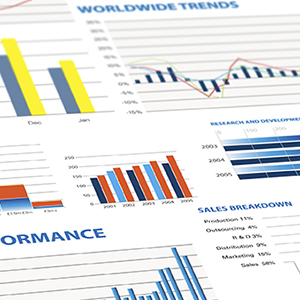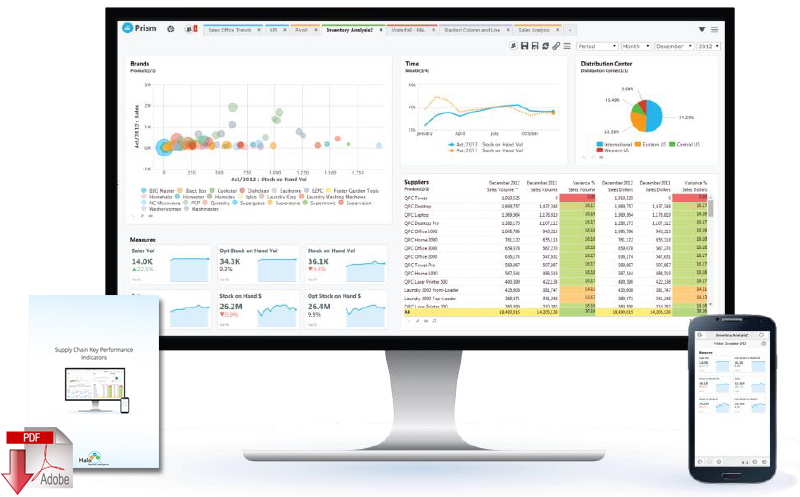Common Pitfalls to Avoid When Designing Supply Chain Key Performance Indicators

With organizations that rely heavily on their supply chain, designing actionable performance level metrics, those that actually matter is even more important than the top level financial drivers.
In my experience, many executives define their success based on competitors’ performance, size, and industry benchmarks.
They rely heavily on a current year goal which is defined as an incremental gain over last year numbers.
At the end of the day, these might work as “targets”, but are they really metrics that you can manage a business around that has a significant supply chain component?
I think not. Measuring performance as % gain over last year’s numbers, is possibly an indication of financial success, but it is not actionable.
By that I mean that nothing in the metric, or about the metric actually allow me to change the results of the metric.
With organizations that rely heavily on their supply chain, designing actionable performance level metrics, those that actually matter is even more important than the top level financial drivers. Why?
Because these metrics measure something that can be changed by realigning people, or improving processes. The incremental improvement in all these metrics ultimately result in improved financial performance.
Unfortunately there is not one simple set of supply chain goals, as each organization is unique, and therefore requires its own set of metrics.
For some businesses, product customization is a key measure. For others, it is speed to market. Whatever the company’s unique strategic advantage, effective performance measurement begins by linking metrics to the corporate Mission, Vision and goals.
Here are a few of the pitfalls I typically see companies encounter when designing their Business Intelligence and analytic systems.
Dirty data, which creates a lack of confidence in measurement results and raises more questions than it answers. This is also the number one reason the overall project might fail.
Too many metrics, usually resulting from a brain-storming session, or a lack of understanding as to which metrics are important.This leads to confusion and a lack of focus.
Stand-alone metrics, developed in a department, or by an SME that are functional and not linked to Mission, Vision or goals.
Conflicting metrics, especially when measuring things like inventory. A high fill-rate goals, could lead to inadvertently lead to inventory overstocks.
Outdated metrics usually resulting from the “we’ve always done it that way” syndrome. These metrics fail to recognize the need for agility, a competitive differentiator in today’s market.
- A lack of ownership or executive buy-in that leads to missed targets and subsequent finger pointing
Stayed tuned for part two where we will cover Five Tips to consider when designing Supply Chain Key Performance Indicators.

About the Author
Ray Major is the Chief Strategist of Halo Business Intelligence. A data scientist, economist and statistician by training, he’s a life-long practitioner in the mysterious arts of data intelligence and analytics.
You can contact Ray by email at [email protected] and also follow him on Twitter at @majorbi
Read Part 2: Five Tips to Consider When Designing Supply Chain Key Performance Indicators

Article Topics
Halo Business Intelligence News & Resources
Logility Acquires Halo Business Intelligence to Expand Data Visualization & Advanced Analytics Automate the Boring but Essential Parts of Your Data Warehouse The World’s Largest, Fastest, Most Agile Supply Chain How to Improve Your Receivables Position with Better Risk Analysis How to Stay Out of Cash Flow Crises Using Cash Position Analysis Supply Chain Key Performance Indicators How to Get Started with Value Add Forecasting More Halo Business IntelligenceLatest in Technology
SAP Unveils New AI-Driven Supply Chain Innovations U.S. Manufacturing is Growing but Employment Not Keeping Pace The Two Most Important Factors in Last-Mile Delivery Spotlight Startup: Cart.com is Reimagining Logistics Walmart and Swisslog Expand Partnership with New Texas Facility Taking Stock of Today’s Robotics Market and What the Future Holds Biden Gives Samsung $6.4 Billion For Texas Semiconductor Plants More Technology














